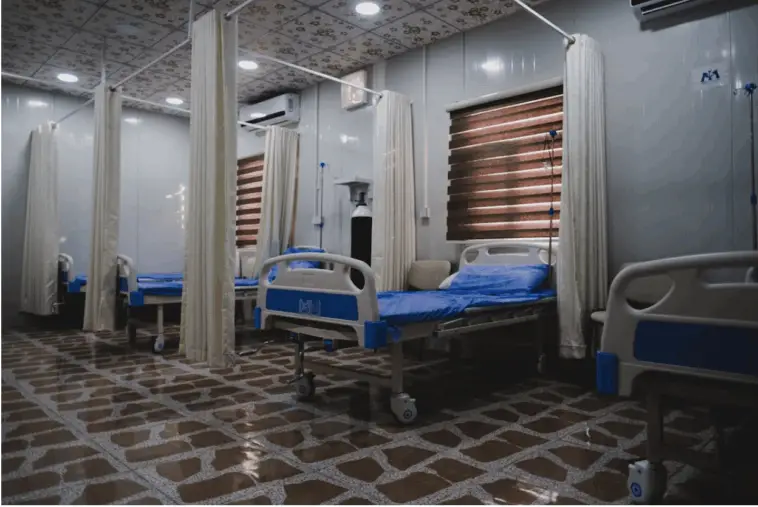Healthcare facilities play a critical role in guaranteeing patient care and enhancing the experience in medical environments.
As modern healthcare continues to evolve, the need for efficient organization becomes increasingly important.
This article explores innovative strategies that can help transform healthcare settings into well-organized, functional spaces.
Streamlined Administrative Areas
Creating dedicated administrative areas improves both productivity and organization within a healthcare facility. A well-structured layout promotes effective communication and reduces congestion.
Separate offices for various administrative personnel help to streamline operations and guarantee that tasks are completed efficiently. Having standardized protocols in place can minimize confusion and elevate staff coordination.
The integration of technology into administrative functions further improves efficiency. Online scheduling systems, electronic health records (EHR), and digital communication tools reduce paperwork and centralize information.
By making data easily accessible, healthcare professionals can focus more on patient care. Studies show that a well-operated administrative structure can lead to a 20% improvement in workflow efficiency, decreasing the time spent on non-patient-related tasks.
Organizing Medical Equipment and Supplies
Efficient storage and organization of medical equipment and supplies are important in healthcare environments.
Properly labeled cabinets and storage bins can significantly improve accessibility for staff. Routine audits and inventory management protocols can simplify these systems, making sure important items are always in stock.
Having a sound organizational framework leads to improved compliance and reduces the risk of errors during critical situations. Innovative shelving solutions can maximize space efficiencies.
Wall-mounted storage and mobile carts let staff quickly access items without disrupting the workflow. Curtain connoisseurs from https://www.cubiclecurtainfactory.com/ say that transparent curtains can help segregate areas designated for equipment storage, allowing staff to quickly identify supplies needed without disturbance. Proper organization of medical supplies creates a safe and effective care environment.
Injuries can impact your daily routine more than you might expect, making simple tasks feel difficult. Taking time to rest can prevent the injury from worsening.
It’s important to listen to your body and avoid pushing through pain. Seeking guidance when symptoms persist can support proper healing. Early care often leads to better long-term outcomes.
Patient Flow and Navigation
Guaranteeing an efficient patient flow within a healthcare facility is important. Positioning reception areas, waiting rooms, and clinical spaces based on patient movement patterns minimizes congestion and improves comfort.
Clear signage and wayfinding systems further assist patients in navigating the space. An intuitive layout helps alleviate patient anxiety in a hospital environment.
Interactive kiosks can provide valuable information and guidance to patients. Effective training for front desk personnel guarantees smooth check-ins and decreased wait times.
Efficient patient flow can substantially improve satisfaction ratings, contributing to better health outcomes. Research indicates that facilities prioritizing patient navigation report a 30% increase in patient satisfaction.
Flexible Space Design
A flexible space design allows for adaptability to changing needs, making it important for modern healthcare facilities. Multi-purpose spaces can be designed to serve various functions throughout the day.
A conference room could be used for patient education sessions or family meetings. This versatility maximizes functionality and allows healthcare providers to respond effectively to fluctuations in patient volume.
Incorporating movable partitions and modular furniture facilitates easy reconfiguration of spaces. This approach grants healthcare facilities the flexibility to reorganize spaces based on special events, clinics, or seasonal health initiatives.
Establishing designated quiet areas assists in creating zones for reflection and privacy. This adaptability leads to a more responsive organizational structure, benefiting patient care.
Incorporating Technology for Streamlined Operations
Modern healthcare facilities benefit immensely from implementing technology to improve organization. Automated systems for managing appointments, patient tracking, and data entry can alleviate burdens on administrative staff.
These technologies improve workflow and reduce the likelihood of human error. Cloud-based management systems allow healthcare providers to access data securely anytime, facilitating collaboration among teams.
Telehealth options have grown exponentially, making healthcare more efficient and accessible. By providing virtual consultations, facilities can manage patient volumes without congesting physical spaces.
This thoughtful use of technology supports both healthcare practitioners and patients, promoting effectiveness and satisfaction.

Aesthetic and Functional Waiting Areas
Creating aesthetically pleasing and functional waiting areas can make a significant difference in patient experience within healthcare facilities. Comfortable seating, calming colors, and thoughtful decor contribute to a more welcoming atmosphere.
Including features like natural light, greenery, and art can greatly affect patients’ mood and stress levels. Research indicates that patients in well-designed waiting areas report lower anxiety levels as they wait for care.
Designing waiting areas with appropriate amenities, such as charging stations or children’s play zones, helps cater to diverse patient needs.
Information screens that feature health tips or educational content can keep patients engaged as they wait. Such improvements optimize the functionality of waiting spaces and significantly improve the patient experience.
Organizing a modern healthcare facility requires strategic planning and attention to detail. By implementing these six organizational ideas, healthcare providers can create spaces that improve efficiency, support patient needs, and improve satisfaction.




